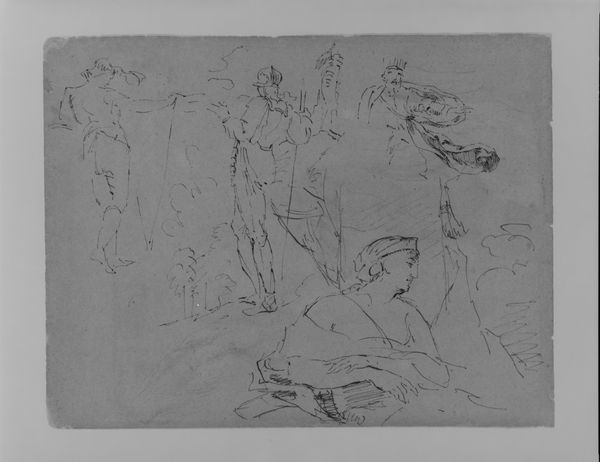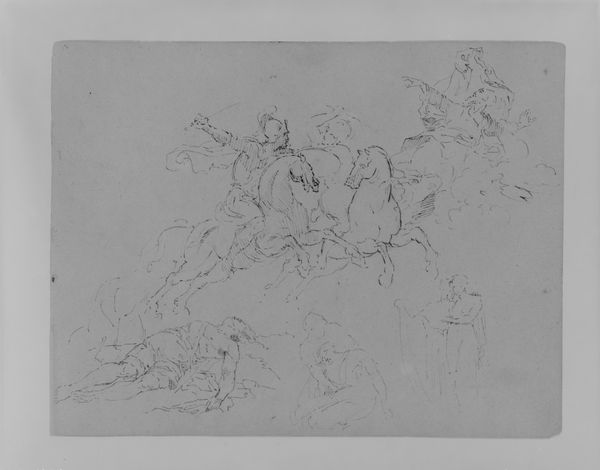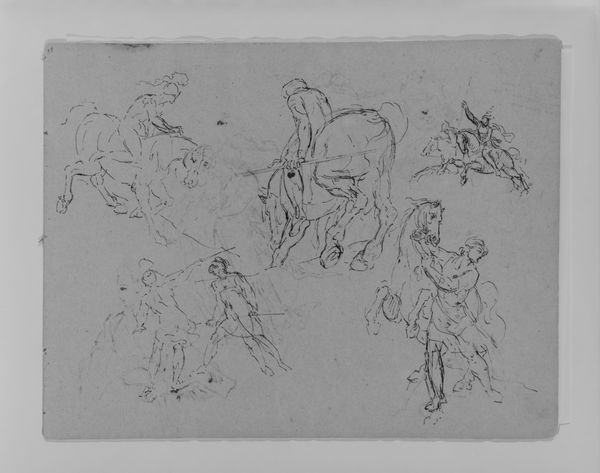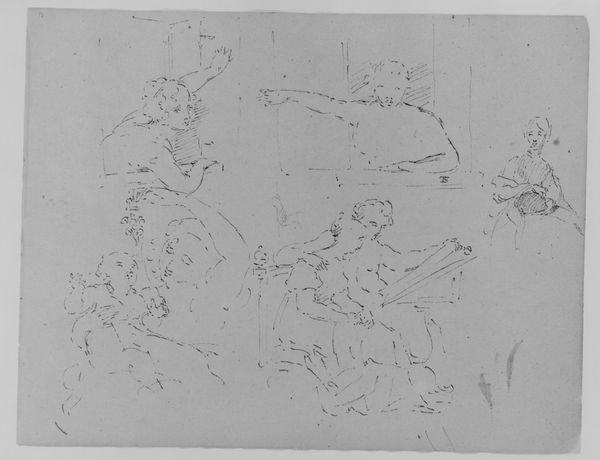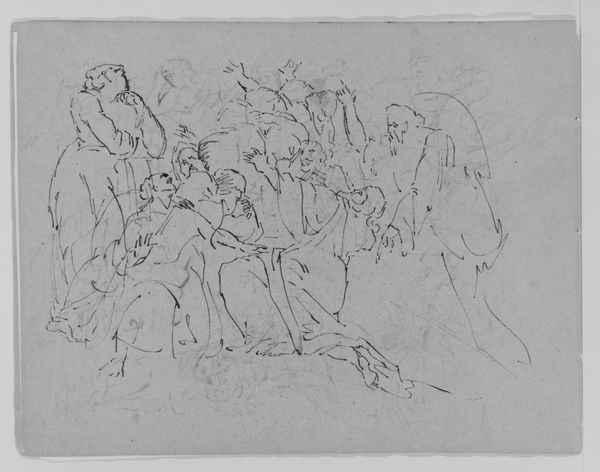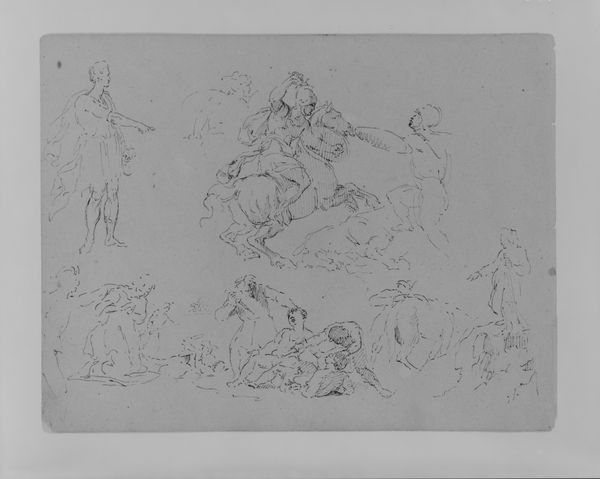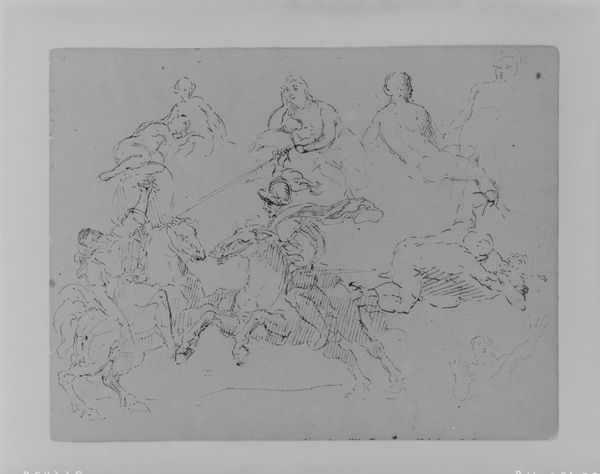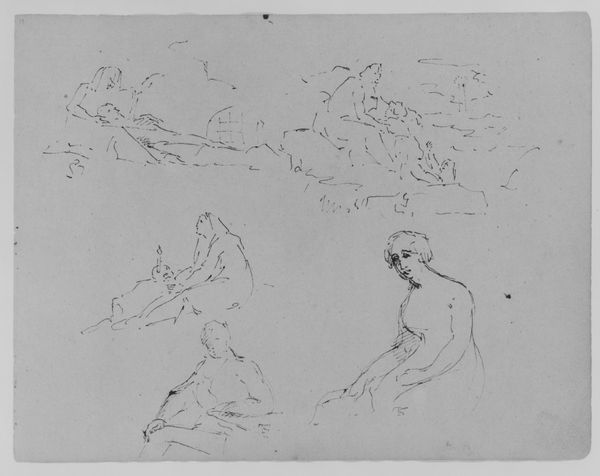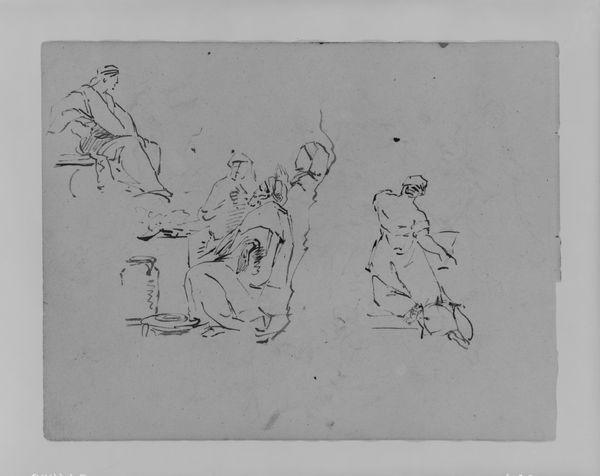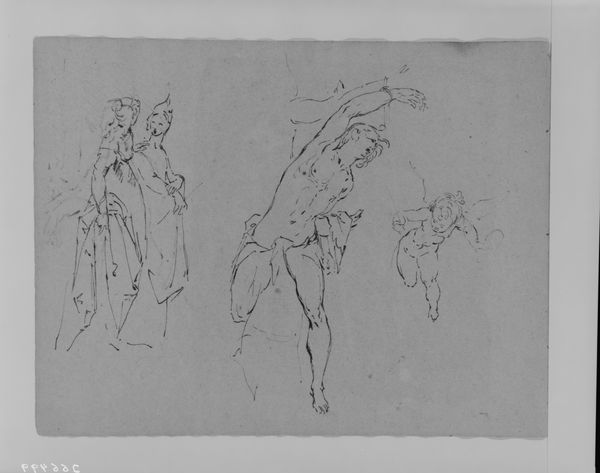
Nine Figure Sketches, Including Three Galloping Equestrains (from Sketchbook) 1810 - 1820
0:00
0:00
drawing, ink, pen
#
portrait
#
drawing
#
human-figures
#
landscape
#
figuration
#
ink
#
sketchwork
#
romanticism
#
pen-ink sketch
#
horse
#
pen
#
academic-art
Dimensions: 9 x 11 1/2 in. (22.9 x 29.2 cm)
Copyright: Public Domain
Curator: This pen and ink drawing is by Thomas Sully, entitled "Nine Figure Sketches, Including Three Galloping Equestrians", dating from around 1810-1820. Editor: My immediate impression is that these figures and horses convey tremendous energy and freedom despite the sketch-like quality. I can almost hear the pounding of hooves. Curator: Indeed. Sully, working within the Romantic tradition, explores classical figuration through dynamic poses. The three galloping equestrian figures stand out as studies of power. We must contextualize Sully’s art within its socio-political landscape to analyze his views on aristocracy, class, and the symbolic role of equestrians at a time when traditional power structures faced challenges. Editor: Looking closer, each figure evokes distinct historical archetypes. I see hints of ancient Greek sculpture and Renaissance equestrian portraiture. Note the symbolism of the horse. Through centuries of art, the horse appears as a noble symbol, embodying power and freedom. This symbolism continues through time; here it recalls similar meanings but feels almost... fragmented. Curator: Yes, fragmented realities mirroring an era where social structures were also undergoing re-evaluation. Moreover, look at the reclining nude figures, perhaps referencing classical ideals of beauty. How do these figures challenge contemporary notions of beauty, power, and the male gaze? The gaze feels less celebratory and more academic. Editor: The combination of reclining nudes and energetic equestrians creates a tension. What narrative threads is Sully trying to weave? The reclining figures evoke tranquility, contrasting sharply with the horses. Are these different aspects of humanity—the active and the contemplative? Curator: Exactly. The interplay embodies conflict between activity and inactivity. Sully creates commentary on social action during a period of upheaval. Editor: I’m struck by the economy of line. With a few strokes, Sully suggests both physical form and dynamic movement, using shorthand symbols effectively. These quickly jotted figures offer enduring symbols in our collective visual memory. Curator: In summary, it presents more than simple visual depictions. Editor: Absolutely. Each visual choice is laden with cultural history. I am now drawn to exploring related equestrian traditions of different global communities.
Comments
No comments
Be the first to comment and join the conversation on the ultimate creative platform.
